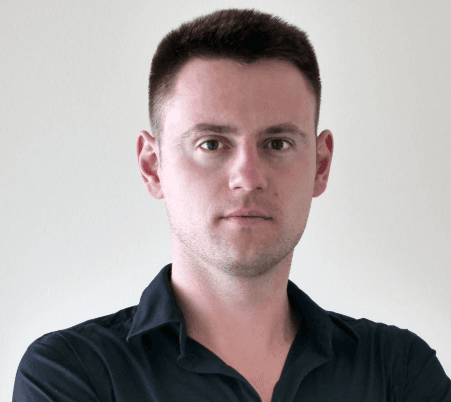How PowerFox Media Scaled to $12M+ with Facebook Lead Gen


Business Description
Table of Contents
Navigate through the case study sections
Executive Summary
Case Study Content
Introduction
In 2020, two professionals from different continents teamed up in the U.S. with no background in paid traffic. Ukrainian-born Ruslan Fedchenko and data analyst Tim Shkarovskiy were hungry to make their mark. After a tech startup collapsed, they accepted a challenge: master Facebook lead-generation for an affiliate firm. Months of losing money turned into consistent gains once they cracked a repeatable creative testing process.
From Zero to First Wins
Starting with almost no budget, Rus and Tim consumed every blog post and podcast on media buying. They launched dozens of ad sets each week, learning the hard way which angles, hooks, and formats drove the lowest cost-per-lead. Early victories, a handful of profitable campaigns, proved the model worked and fueled their determination to keep iterating.
Building a Creative Testing Framework
Realizing creative was their most scalable edge, the duo hired designers and videographers to pump out static images, motion graphics, and long-form videos. They constructed a split-testing protocol: launch 10–15 variants at once, track click-through and conversion rates, and then double down on winners. They refined copy using attention-grabbing headlines and clear calls to action, always tying each ad to a tightly matched landing page.
Scaling with Systems
As profits rose, they built an in-house dashboard to unify metrics across accounts and traffic sources. This tool gave real-time insights on ROI and spend allocation. Hiring compliance experts ensured ad approvals under evolving platform rules. They resisted the urge to hire too quickly, only onboarding new media buyers once their core campaigns were fully dialed.
Pivot to Performance Marketing
By early 2023, PowerFox Media began taking equity stakes in e-commerce partners instead of simple affiliate payouts. A deal to run a $20 million brand’s traffic yielded $5 million in revenue within 90 days, validating their move into full performance marketing. That shift not only jacked up margins but aligned incentives and unlocked new growth avenues.
Key Learnings
PowerFox Media’s rise to $12 million in annual revenue rests on three pillars: aggressive creative testing, a data-first mindset, and strategic partnership models. They demonstrate that founders willing to embrace risk, invest in systems, and expand from affiliate to performance marketing can achieve rapid, sustainable scale.
Key Takeaways
- 1Master creative testing by launching multiple ad variants and doubling down on top performers to drive low cost-per-lead.
- 2Use data from a unified in-house dashboard to allocate spend quickly and spot performance shifts across channels.
- 3Hire compliance experts to ensure ad accounts stay active under evolving platform policies.
- 4Slow hiring: only onboard media buyers once campaigns hit stable ROI benchmarks to maintain profitability.
- 5Transition from affiliate payouts to performance marketing equity deals to boost margins and align partner goals.
- 6Leverage a mix of static images, motion graphics, and long-form videos to keep ad creative fresh and engaging.
Key Facts
Tools & Technologies Used
Premium Content Locked
Subscribe to access the tools and technologies used in this case study.
Unlock NowHow to Replicate This Success
Premium Content Locked
Subscribe to access the step-by-step replication guide for this case study.
Unlock NowInterested in Being Featured?
Share your success story with our community of entrepreneurs.
Explore More Case Studies
Discover other inspiring business success stories

How Alex Savy Built and Sold Sleeping Ocean: A Six-Figure Mattress Affiliate Site with Real Reviews
Alex Savy turned his mattress review site, Sleeping Ocean, into a six-figure success by focusing on in-depth, first-hand...
Sleeping Ocean (Sleepopolis)

How a Stay-at-Home Mom Built a Six-Figure Home Decor Blog
In this case study, we explore how Jenna Campbell left her corporate role to create Lantern Lane Designs, a home decor b...
Lantern Lane Designs

How I Made $10,000+ with Fiverr Affiliate Program Using VidIQ
In this case study, Umeh Offordile Gerald reveals how he combined VidIQ’s keyword research and YouTube tutorials to driv...
OnlineHustleTV